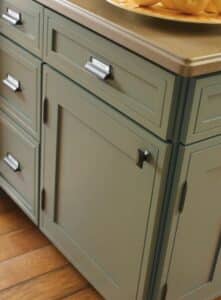Congratulations on your stunning new cabinets! They’re the foundation of your kitchen, adding beauty and functionality to your home. But how do you keep them looking their best for years to come? Don’t worry, we’ve got you covered!

how to clean kitchen cabinets
cleaning essentials:
- Regular Dusting: This is your first line of defense. Use a soft, lint-free cloth for a gentle touch. For laminate and high gloss cabinets, a microfiber cloth is your best bet.
- Warm Water Warrior: For most cleaning needs, a damp, soft cotton cloth (or microfiber cloth for laminate and high gloss) will do the trick. Warm water works wonders!
- Mild Dish Soap Solution: For tougher grime, create a mild solution of dishwashing liquid (not dishwasher detergent) with warm water. A good ratio is 5% dish soap to 95% water. Remember, always wipe down with a clean, damp cloth afterwards and dry thoroughly. Here’s the key:
- Stained & Painted Cabinets: Dry with a separate clean, soft cloth.
- Laminate & High Gloss Cabinets: Microfiber cloth is a must to avoid scratches.
Dealing with Spills and Splatters:
- Act Fast! The quicker you clean up spills, the less likely they are to stain or damage the cabinet finish.
- Warm Water or Dish Soap Solution: Clean as needed depending on the severity of the spill. Remember, prolonged exposure to liquids and grease can cause permanent damage.
- Drying is Crucial: Use a soft, clean cloth for stained and painted cabinets, and again, a microfiber cloth is best for laminate and high gloss.
Glass Door Magic:
- Ammonia-Free Glass Cleaner: This is your friend! Spray the cleaner onto a clean, lint-free cloth or paper towel, then wipe down the glass. Don’t spray directly to avoid seepage behind dividers that could damage the wood.
Skip the Polishing and Waxing:
- Leave it on the shelf: Your cabinets don’t need waxing or polishing. Over time, these products can build up and create a hazy, streaky, or yellowed appearance. Trust us, no one wants that!
Uh-Oh! A Nick or Scratch:
- Touch-Up Kits to the Rescue: Minor nicks and scratches happen. Your cabinets should have come with a touch-up kit or you can purchase one from the manufacture, though us that is a color-matched to your cabinets. The kit will usually include a touch-up pen for minor blemishes and a tinted putty stick for deeper scratches.
Bonus Cabinet Care Tips:
- Avoid Damp Dishtowels: Moisture is the enemy! Drape them elsewhere to prevent peeling and discoloration of the cabinet finish.
- Maintain Consistent Climate: Wood expands and contracts with moisture changes. Refer to your Cabinet Warranty and the signature package when you purchased. This includes information about the ideal humidity and temperature ranges.
- Beware of Self-Cleaning Ovens: The high heat can damage surrounding cabinets. Minimize the risk by removing nearby doors and drawers before using the self-cleaning feature.
- Be Sunlight Savvy: Direct sunlight can darken natural wood (except walnut, which lightens). Draperies or blinds can shield your cabinets from harmful UV rays. Don’t clean laminate and high gloss materials in direct sunlight either.
- Cleaning Product No-Nos: Harsh detergents, abrasive cleaners, ammonia, bleach, and solvent-based products are a big no-no. Stick to mild dish soap solutions and microfiber cloths for laminate and high gloss cabinets. It will save you money and keep your cabinets looking great.
- Communicate with the Cleaners: If you hire a professional cleaning service for your home, take a moment to ensure clear communication regarding your cabinets. Many cleaning services use general-purpose products that may be too harsh for cabinet finishes. This can lead to chipping, discoloration, or even warping. Be sure to provide written instructions on the proper cleaning methods for your cabinets. A little upfront communication can save you a lot of heartache (and a ton of money) down the road.
By following these simple tips, you can ensure your beautiful cabinets stay that way for years to come. Knowledge is power!
By Gina Richard
